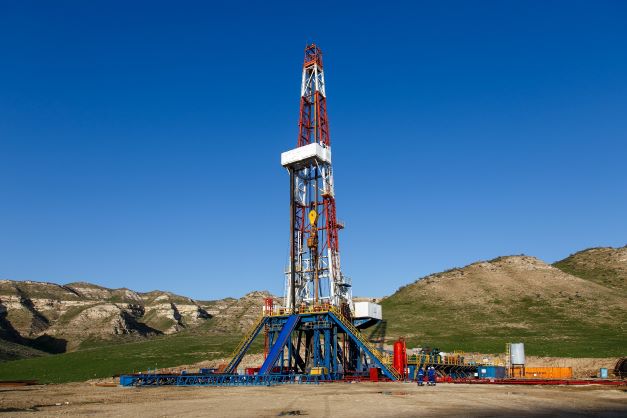Course Details
Home / Public Courses / Course Details
ONLINE: Coiled Tubing Operation and Acid Stimulation (PRE938)
Description
This course will focus on major areas of acid stimulation techniques and addresses both theoretical concepts and practical onsite experience.
Acidizing with coiled tubing will also be discussed in detail, due to its importance in acid placement and formation treatments.
The course starts by presenting the basic concepts for stimulation job design, execution and follow up. Discussion is carried out on formation damage and its effect on well performance and planning of acid stimulation treatments. Focus is given to the main causes of formation damage (damage during drilling, cementing, perforating, production and working over wells) and how these may be identified. The course also highlights the importance of well integrity and CT in stimulation operations.
Course Level: Skill
Duration: 5 days
Instructor: Antonio Abreu
Acidizing with coiled tubing will also be discussed in detail, due to its importance in acid placement and formation treatments.
The course starts by presenting the basic concepts for stimulation job design, execution and follow up. Discussion is carried out on formation damage and its effect on well performance and planning of acid stimulation treatments. Focus is given to the main causes of formation damage (damage during drilling, cementing, perforating, production and working over wells) and how these may be identified. The course also highlights the importance of well integrity and CT in stimulation operations.
Course Level: Skill
Duration: 5 days
Instructor: Antonio Abreu

Designed for you, if you are...
- A petroleum engineer, production engineer, CT supervisor or operations supervisor
- A manager wanting to get more familiarized with stimulation and CT
- A reservoir engineer, petrophysicist or foreman connected with stimulation operations
How we build your confidence
- The course will be presented using PowerPoint slides, some with animation and several videos on relevant issues.
- Teaching methods include calculations on related issues.
- Several examples of actual stimulation programs will be presented.
- Questions related to the course content will be sent daily per email to the course attendants, who will answer by return e-mail (optional).
The benefits from attending
By the end of the course you will feel confident in your understanding of:- Introduction to stimulation operations
- Formation damage mechanisms and their identification
- Brainstorming on skin damage
- Acid reactions and their selection for carbonates and sandstones
- Acids and additives used in matrix stimulation
- Candidate well selection
- Acid treatment design
- Acid placement and diverting technologies
- Using coiled tubing for acid placement, displacement, and flow back
- Laboratory tests
- Acid fracturing design basics
- HSE and acidizing operations
- Safety & quality assurance
- Well integrity principles
- Coiled tubing and its importance in stimulation operations
Topics
Introduction to stimulation concepts and objectives- Introduction to acidizing
- Acidizing of carbonates and sandstones
- Acid fracking overview
- Damage caused by well operations
- Well candidate selection process (overview)
- Why there are failures in acidizing?
- Acid treatment design overview
- Types of damage
- Monitoring the acid backflow
- HCL acid by-products
- Capturing data, before, during and after the job
- Acid reactions with OBM (Oil Base Mud)
- Emulsions
- Formation damage and other considerations
- Formation damage mechanisms
- Matrix acidizing
Types of Acid and Acid Formulations
- Sandstone versus carbonate acidizing
- Typical treatment execution
- Fracture acidizing
- Proppant fracturing versus fracturing
- Economic impacts of well stimulation
- Acid types / reactions / methods
- Fluid injectivity on test core
- Types of acid
- Acid formulations
- Organic acids
- Acid dispersion
- Viscosified acid
- Acid emulsions
- VES acid
- VES-HCL: gelling and breaking
- HCL reactions with carbonates
- HCL / HF acids
Pressure Response, Post-Job Procedure
- Acid reactions
- Rates of reaction
- Carbonate acidizing
- Sandstone acidizing
- Binary acids
- Dissolving power of acids
- Molecular weights
- Treatment evaluation
- Post-job procedure
- Pressure response during acid treatment
- On-site evaluation of treatment effectiveness
- The Paccaloni technique
- Sandstone acidizing using a protective Ion Agent (technique researched and developed in Oman)
- The disadvantage of using HCL/HF
- The concept behind this technique
- On job charts for job monitoring
- Recording of a stimulation job
- Pressure build-up analysis before and after acidizing
- Main components of a CT Equipment Package
Coiled Tubing Technologies for Successful Stimulation Jobs
- No acidification without coiled tubing
- Coiled tubing conveyance and intervention methods
- Downhole well tractor
- CT insertion and removal under pressure
- High displacement rates in formation with good permeability without limitation from CT friction pressures
- Wireline and CT intervention methods
- Fishing with CT
- Main fishing tools
- Job design data for fishing operations
- Well plug & abandonment
- Emergency procedure in case of CT failure
- Building safety commitment
© All rights reserved
HOT Engineering GmbH Tel: +43 3842 43 0 53-0 Fax +43 3842 43 0 53-1 hot@hoteng.com
